Thursday, June 23, 2005
Ankahee

-------------------story----------
An interesting story that talks about the people who blindly believe astrology. Shreeram Lagoo is a famous astrologer whose prediction always come true.The movie starts with him predicting that his son nandhu's(Amol Palekhar) friend's(vidhu vinod chopra ??) wife will die in the pregnacy.And his words come true.Nandhu is in love with sushma.when he decide to get married .His father predicts that nandhu's first wife will die in 11 months after the marriage, during her pregnancy.Nandhu who beleives his fathers astrological predicitons beleivs that.During that time astrologer's friend comes and stays with his daughter indhu(Deepti naval)at nandhu's house daughter come and stay in there house.Indu is an immature person with some pshycological problems.Nandhu who does not wants to loose sushma decides to marry indu so that he can remarry sushma when indhu dies as predicted by his father.The marriage happens and as usual the husband falls in love with his wife.And the time of pregnancy comes.what happens is the climax.
----------------------------------
The movie is great for the first half and then it starts to sag and slows down a bit and ends with a nice climax.
Deepti naval plays a beautiful role.She is a young girl in a woman's body.She is mentally not matured.She is filled with emotions.Like bubbles in a boiling water, various types of emotions comes out of her only to disappear in a few seconds and reappear as a different one.Again it is not done in the usual masala type way with exaggerated emotions etc.Things are shown subtly.This is a character that a performance inclined actress would die for.Deepthi Naval does a nice job with it, wish she could have done better but definetly a good performance.Her innocent smile makes her a best fit for the naive village girl role.

Sriram lagoo has done a nice job in the job.He is the future predicting astrologer.Amol is average in the movie and seemed to have saved some money on the production cost by not putting make up.
I don't know whether this movie took the inspiration for the deepthi naval character from K.Balachander's "Agni Sakshi".The lead characters in both the movie are kind of similar.The pshycologist like agni sakshi likes his patient and advices that she would be alright as time progresses.
After the movie was over.I listened to the songs again and again.This movie has some awesome songs.most of the songs are bhajans.
1)Kauno thagwa nagariya lutal ho - Asha
2)Mujkho bhi radha - Asha
3)Thumaka Thumaka Paga - Bheem sen joshi
4)Raghuvar thujh ko - Bheem sen joshi
The first 2 songs where by asha, i liked them a lot.Then came a song by Pandit Bhim sen joshi.With the first 2 lines i understood what it means to be a Pandit.The song was delivered with authority and style.
The second song."Mujhko bhi radha banaley" comes twice.one is when indhu is still that bubbling young girl and the next time after their marriage is consummated.
The song uses the same 3 instruments tabla,flute,sitar for both the version.But both the verions are done so wonderfully that they reflect indhu's maturity from a child to women.The first version is with so many swara changes and pacy, the songs flows like a river depicting the numerous emotions that she has and the second one is slow and sustained.That song explained why the movie got jaidev the best music director national award in 1984
Bheem sen joshi also sings 2 songs."Thumaka Thumaka Paga" comes during nandhu's marriage.This song was badly edited.The idea must have been that when the function is happening and a particular emotion is freezed for a second.Rather than putting a still shot, people act as if they are freezing while the camera is running.It was funny.
The movie got the national awards in 1984 for
Best Music Director : Jaidev
Best Male Playback Singer : PT. Bhimsen Joshi
Unfortunately asha didn't get the national award that year.The national award that year went to S.Janaki for "Vennello Godari Andham" from the movie Sithara.An awesome song.It is the telugu version of "Dhoorathil nan kanda un mugam" from nizhalgal.If you are scratching your head when this song comes in nizhalgal.It was in the tape but didn't make it to the movie.
The second heroine sushma is the biggest comedian in the movie.It beats me why she was casted in the movie.She is not good looking, pathetic in acting and looks like someone gave dubbing voice for her.probably she was the producers daughter or something.But Amol has cleverly got around this PROBLEM.When ever there is a case where she has to act.he will make her turn and show her back to the camera or keep interesting camera angles so that she doesn't have to emote in front of the camera.It was comical.
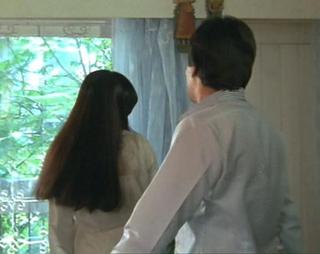
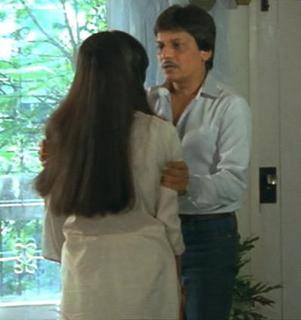
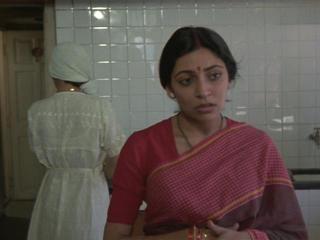
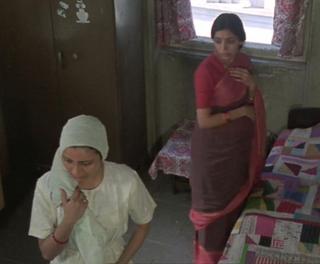

A simple and different story with great music.
Thursday, June 09, 2005
Hazaaron Khwaishein Aisi(Thousand Desires such as this) -part2

I still dont understand this pic.Geetha character never uses the gun in the movie.why in the poster??
Read part 1 here
HKA is the Lal salaam of sudhir mishra to a generation that grew up in an era where india's destiny could have been changed. A generation that dreamed to change the world, they fought with their parents, left what they had good education,money etc and went to remote villages to fight for an ideology.Sudhir mishra tells the story about that generation and there thousand desires to a new generation, which is is ideologically empty and enjoying the benefits of the sacrifices made by the older generation without even thinking about them.But sudhir is not taking blatant sides in the movie, he does show his displeasure towards indira gandhi and the janatha party,but he is not rooting for the romantic idea of armed resistance.Things are told in a subtle way.Unlike Govind nihlani's "Hazar chaurasi ki Maa" which presents the idea raw, sudhir presents it wrapped in a beautiful love story.
The movie starts with the dream of pandit nehru.His independence speech "Tryst with destiny".
"At the stroke of the midnight hour, when the world sleeps, India will awake to life and freedom..."As soon as the speech ends.Sudhir mishra brings you down from that lofty dream of nehru by quoting that
"Nehru was holographically wrong. Infact the time at New York was 2.30 in the afternoon"That was a dream and a reality.The dream speech of nehru is again brought down.This time through images of a mob violence.The scene starts with the banner of indira gandhi and the violence happening right under the banner.The dream of the father and the reality during his daughter's regime.
The movie goes on to explore the unattained dream of nehru through the lives of 3 college friends.Siddarth Tayebji(Kay Kay Menon),Vikram Malhotra(Shiny Ahuja) & Geetha Rao(Chitrangada Singh).Siddarth, son of an ex judge desires to change the political system through armed resistance, vikram hailing from a middle class family wants to make it big in terms of money and power, however he can.Geetha is in love with siddharth and wants to be with him. But for siddtharth his first love is his ideology.
After college they all move in different directions.When they meet again there life had changed.The movie from then on brilliantly weaves the political situation of that time period with the story.To a certain extent all the 3 characters attain what they want.But a twist in the tale, turns theirs life's topsy turvy.What happened to their desires is what the movie is about.At the end of the movie the fate of the generation represented by the three people are different,their desires changed.one escapes reality,one becomes totally powerless and one carries the hope.
The movie was great.But i felt something was missing in the movie.I didn't feel good, or i didn't feel overwhelmed with emotions at the end of the movie.But i felt that what happened to the characters where wrong.I felt as if only 96% of the movie was there there was this 4% missing.What was it, the lovers walking into the sunset??.The hero killing the bad peoples and going to jail??.Hero dying??.I was confused and wanting an answer.
Then i realized that this is what sudhir mishra wanted to do.By making us involve in the 3 peoples desire and leaving us in the middle,he forces us to feel for their desires.The desires are left to you to be mentally fulfilled.With, kind of an open ended climax, sudhir mishra has successfully made everyone to question themselves on what is right and what is wrong.How things went wrong in the life of those three people(that lost generation) and the political system of india?.what is everyones stance now and how could those desires be fulfilled?.I think sudhir mishra's masters in pshycology must have helped him a lot in constructing such a story.
Another good thing about the movie is, nothing is in black and white.You cannot pin point one person as good and other person as bad.The characters are not plain, they are complex.They all show greatness & weaknesses.Like arun, geetha's ex husband who after hearing about geetha, releases her from jail, but he says NO to releasing sids.vikram rushes to bojpur to save sids, but when he himself is in the hospital he hates and shouts at sid.
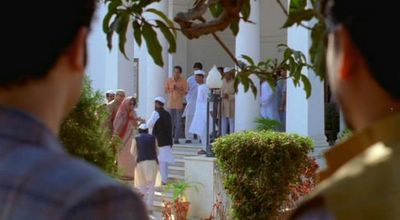 Indira
IndiraSimilarly the movie does not manipulate your emotions or it does not explicitly say things.It just suggests things in a very subtle way.It is emergency, sterilization camps are taking place, police brutality is shown and in the next scene Sid's father talks with a politician about getting sids released from the jail.Indira visits that politicians house and there are chants "How should a nation's leader be, should be like indira gandhi".
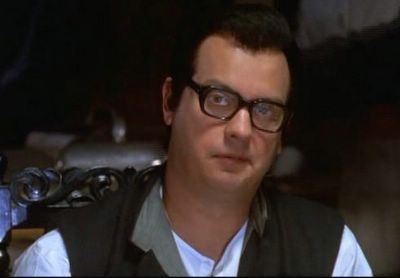 A Sanjay gandhi look alike
A Sanjay gandhi look alikeAmong all the corrupt characters there are only 2 peoples who stick to there ideologies during those turbulent times.One is sidtharth(to a large extent) and the other is vikram's father, both representing the different ideologies of charu mazumdhar and JP.The movie depicts the false nature of the change that was about to be brought by the Janata party,by showing randhir yadav joining the Janatha party and his political talks.When the political chameleon's like randhir yadav are scared to death because of emergency, vikram visits his father in jail and he is proud to see his father, a tireless soldier of gandhi spinning cotton.

The performance by everyone who acted in the movie was good.Every small character becomes memorable.vikram is the most colorful character in the movie.He portraits the middle class mentality of trying to make it big.He depicts the bourgeois youth who doesn't care about the society and is focussed only on making money.His only weakness is geetha.Even though geetha fails to see his love, he forgives and accepts her every time.
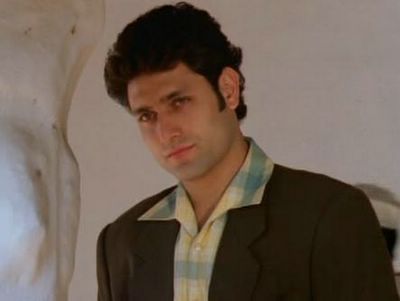 Vikram
VikramHe has this small slimer of hope when geetha leaves her husband arun.But when he goes to her apartment with a wine and she says that she is going to the village to be with sids.He accepts his defeat and changes his decision in a minute.He takes the tag out of the wine and starts dancing and tells that he is getting married to someone else.
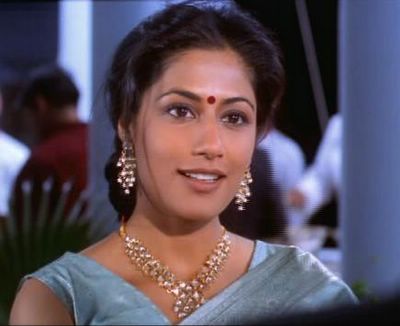 Geetha
GeethaKay kay(this movie is supposedly his first but it got released later) has also given a good performance.chitragandha singh fits the role of geetha beautifully.She is the less developed character of the three.At the end you are left with a confusion whether she loved sidtharth or the romantic idea that he was carrying.
I liked the way the letters were used in the movie.The letters had perfect wordings, summing up everything beautifully.You come to know about the characters first by two letters to geetha, one by sid and other by vikram.siddharth's talks about his interests in naxal movements and nothing personal.on the other hand vikram starts with the line "first thing first, i love you" and tells about the riot in his home town meerut and that ONLY 38 people where killed in the riots and gives a funny account of two people killed by lions in the riot and how he wished his gandhian father stopped worrying about the communal riots and concentrated more on generating money for the family.You get the gist of the characters from the letters and what they want.sidharth writes 3 letters he comes and goes out of the movie through a letter and in between he gives an account of his experiences in bhojpur, bihar through letters.sidharth first letter is brimming with dreamy youthfulness("we have to change the world and change it fundamentally").second letter is the reality on the grounds in the village in bihar bhojpur("Bhojpur and delhi are not only separated by a 1000 miles but also by 5000 years").He beautifully bids adieu in the third letter by saying "you have to get away from your first love to be completely free",the third letter is the death of the dreams.pretty much the summary of any dreamers big unachieved dream.
passionate Big dream -> face reality -> disillusioned, compromise,accept defeat or rarely succeed.
Music by shantanu moitrai is good.You find music only where it is needed.Man yeh bawra was awesome.Hearing 'He sajni' i had to recheck whether it was done my "Indian ocean".
Hats off to sudhir mishra for not compromising with the story and for giving such a good movie.For a second imagine what and all could have been done with this movie.It could have easily been made into a big commercial movie.Imagine maniratnam making this movie.It has 3 college students,love & a political backdrop.
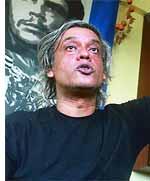
Let's welcome another quality movie maker that is sudhir mishra.Iam hoping to see more great works from him.
links
madrid film festival
official web site
Tuesday, June 07, 2005
Hazaaron Khwaishein Aisi(Thousand Desires such as this) - part1
check out my previous post on this movie.
I thought of writing a review about Haazaron khwaheishein aisi.But this is a wonderful movie which like heyram weaves the story with the political situations of a different time period and you have to know that time period to completely appreciate the movie.So here is something about the time period and other backgrounds of the movie.
The decade that the movie is talking about is an important one in the political history of india.Great things happened during that time period.For all those people who were fed up with the socialist regime of congress there was two opposing ideologies available, the armed resistance of Naxalbhari and the peaceful change by JP(Jai Prakash Narayan) 'Total Revolution' movement.And off course, emergency the biggest blotch on india's democratic record happen in that time period.
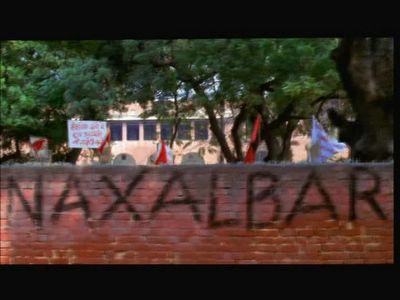 sidtharth's group walking near a wall with the "Naxalbhari - Lal salam" graffitti.
sidtharth's group walking near a wall with the "Naxalbhari - Lal salam" graffitti.
The movie starts with sidharth's letter to geetha.
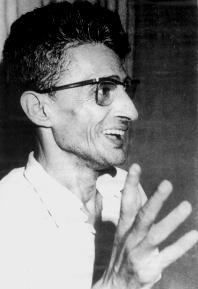 charu mazumdhar
charu mazumdhar
you can listen to the people in sidharth's house mentioning about the naxal movements in calcutta and charu mazumdhar. When there talk goes to villages. They mention that “charu babu” has told that alongside trade unions and party workers, the farmers should also be armed. In 1967 the event of Naxalbhari rocked the country. The naxabari violence was put down but naxalism was born, till today the idea that charu mazumdhar sowed is still there.
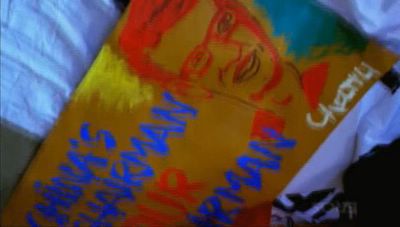 sidtharth's protest poster similar to that of charu mazumdhar.
sidtharth's protest poster similar to that of charu mazumdhar.
On the other hand JP who was a gandhi and vino bhave disciple was trying to bring a change by peaceful means.
 Lok nayak Jayaprakash narayan
Lok nayak Jayaprakash narayan
 vikram's wedding procesion crosses a group carying placards of JP
vikram's wedding procesion crosses a group carying placards of JP
Lot of youths were attracted by charu mazumdhar's idea.
charu mazumdhar documents
Read the important events in Naxalbari history here.
Very few movies in india has talked about the naxal movements.
1)Tango charlie -> ajay devegan's flash back talks about this bengali landlord that he protects.The land lords house is attacked by the naxals and they do what was known as "people court" .where justice was given by the naxals.
2)Haazar chaurasi ki maa -> This is probably the best movie that gave a close up look of a naxal mindset and kind of romanticized their armed struggle.Govind nihalani is someone who has taken many movies were naxal or armed resistance by the down trodden are mentioned and this is the best of all.This particular movie should have definitely impacted sudhir mishra.This movie talks about a group of bright students who take up armed resistance and a mother's view of it.The movie is set in the 1970-72 during the naxal movement in calcutta.It's a wonderful movie will write about it later.
3)Lal salam - havn't seen this movie.but heard one hard hitting movie about naxals.

I thought of writing a review about Haazaron khwaheishein aisi.But this is a wonderful movie which like heyram weaves the story with the political situations of a different time period and you have to know that time period to completely appreciate the movie.So here is something about the time period and other backgrounds of the movie.
The decade that the movie is talking about is an important one in the political history of india.Great things happened during that time period.For all those people who were fed up with the socialist regime of congress there was two opposing ideologies available, the armed resistance of Naxalbhari and the peaceful change by JP(Jai Prakash Narayan) 'Total Revolution' movement.And off course, emergency the biggest blotch on india's democratic record happen in that time period.
 sidtharth's group walking near a wall with the "Naxalbhari - Lal salam" graffitti.
sidtharth's group walking near a wall with the "Naxalbhari - Lal salam" graffitti.The movie starts with sidharth's letter to geetha.
Yes they were the best and brightest of bengal.Lot of students participated in the naxal activities during that time period.Some left there houses and moved to villages to carry on the struggle.The violence even spread to the cities and calcutta became the center of urban violence.Read about the experience of one student here.Dear Geetha,
Calcutta was awe inspiring. My beliefs totally strengthen. We have to change the world, and change it fundamentally. You know i always knew the fact, but when i met some of the mothers and widows of thousands of students who have sacrificed their lives during the naxalite movement, i felt completely humbled. They were the best and brightest of bengal.
 charu mazumdhar
charu mazumdharyou can listen to the people in sidharth's house mentioning about the naxal movements in calcutta and charu mazumdhar. When there talk goes to villages. They mention that “charu babu” has told that alongside trade unions and party workers, the farmers should also be armed. In 1967 the event of Naxalbhari rocked the country. The naxabari violence was put down but naxalism was born, till today the idea that charu mazumdhar sowed is still there.
 sidtharth's protest poster similar to that of charu mazumdhar.
sidtharth's protest poster similar to that of charu mazumdhar.On the other hand JP who was a gandhi and vino bhave disciple was trying to bring a change by peaceful means.
 Lok nayak Jayaprakash narayan
Lok nayak Jayaprakash narayanHe later launched the anti corruption movement against Indira gandhi which eventually lead to the regime change at the center.In June 1971, Sarvodaya workers in Muzaffarpur, Bihar, received a letter threatening to kill them. The area was continuously threatened by Naxalites, which was made up of young men. Jayaprakash walked into the heart of Naxal territory armed only with love and sympathy. He knew that the cause of the violence was that the youth were frustrated because of poverty and unemployment. He lived in Musahari block for many months and experimented to alleviate the problems of the Naxals.more
 vikram's wedding procesion crosses a group carying placards of JP
vikram's wedding procesion crosses a group carying placards of JPWhat exactly is this Naxalite movement and what is its ideology?
The Naxalite ideology is broadly based on the late Comrade Charu Majumdar's historic Eight Documents and creative application of Marxism-Leninism-Mao Tsetung thought to Indian conditions. The documents are historic as they initiated a sharp departure from parliamentary democracy and put forward revolutionary politics to win justice and end oppression.
The Naxalbari uprising of March 1967 saw the implementation of Charu Majumdar's vision of revolution. The armed peasants' struggle began in Naxalbari in West Bengal on March 2, 1967 when a tribal youth named Wimal Kesan, who had a judicial order, went to plough his land. Local landlords attacked him through their goons. This sparked wide-scale violence by tribals who started capturing back their lands. In the 72 days of Charu Majumdar-backed tribal violence and retaliatory action by the state, the incident echoed throughout the country and Naxalism was born.
The ultra-leftist Naxalite ideology took concrete shape in a May 1968 meeting of All India Coordination Committee of Communist Revolutionaries (AICCCR) which represented revolutionaries from seven states of Tamil Nadu, Kerala, UP, Bihar, Karnataka, Orissa and West Bengal. In 1969, a Communist Party (Marxist-Leninist) was formed under the leadership of Charu Majumdar. It argued that democracy in India was a sham and decided to base Indian revolution on protracted guerrilla warfare on the lines of Chinese model. Who was this Comrade Charu Majumdar and what were his eight documents?
Comrade Charu Majumdar's was born in a progressive landlord family in Siliguri in 1918. He not only dedicated his entire life to peasants' cause but also authored the historic 1968 Naxalbari uprising, the ideology which guides the Naxalites even today. Dropping out of college in 1937-38 he joined Congress and tried to organise bidi workers. He later crossed over to CPI to work in its peasant front and won respect of the poor of Jalpaiguri. Soon an arrest-warrant forced him to go underground for the first time as a Left activist. Although CPI was banned at the outbreak of World War II, he continued CPI activities among peasants and was made a member of CPI Jalpaiguri district committee in 1942.The promotion emboldened him to organise a 'seizure of crops' campaign in Jalpaiguri during the Great Famine of 1943, more or less successfully. In 1946, he joined Tebhaga movement and embarked on a proletariat militant struggle in North Bengal. The stir shaped his vision of a revolutionary struggle. Later he worked among tea garden workers in Darjeeling.He was again jailed during the 1962 Indo-China war as part of curbs on all Left activities in India.
Charu Majumdar's was in bad health during the 1964-65 period and was advised rest. But he devoted his time, even in jail, to study and write about Mao's thoughts. The exercise shaped his vision and ideas of a mass struggle, which were recorded in his writing and speeches of 1965-67. These were later called 'Historic Eight Documents' and subsequently formed the basis of Naxalism. On May 25, 1967, the CM-led "rebels" launched the historic peasant uprising at Naxalbari in Darjeeling district of West Bengal. It was "brutally" suppressed by the state government but the ideology of "Naxalism" not only survived but also spread. With the upsurge of Naxalism, comrades from Tamil Nadu, Kerala, UP, Bihar, Karnataka, Orissa and West Bengal set up All India Coordination Committee of Revolutionaries (AICCR) in CPI (M) on Nov 12-13, 1967. It was renamed as All India Coordination Committee of Communist Revolutionaries, which launched CPI (ML) on April 2, 1969 with Comrade Charu Majumdar as its General Secretary.
A fierce crackdown by the authorities on ultra-Leftist movement in India's West Bengal and Andhra Pradesh states, (which climaxed during and after 1971 Bangladesh war) saw the killings of many key ultra-Leftist leaders and ailing Comrade Charu Majumdar had to go underground. By 1972 he was India's most wanted man. Charu Majumdar was arrested from a Calcutta hideout on July 16, 1972 and died twelve days later, on July 28, 1972, in police custody in the Lal Bazar lock-up infamous for its torture chambers where he was tortured while being held incommunicado.
His 'brain-child' Naxalism -- the ultra-leftist manifestation of age-old peasant struggle in India -- did not die after Comrade Charu Majumdar's judicial murder but the saga of terror and violence, by the land-less oppressed against the oppressor, that it entails has continued over the decades in different parts of India despite severe official crackdown on it by a police/landlord/Bania nexus.The movement continues to grow, in both its political and violent forms, in backward and tribal areas of Madhya Pradesh, Andhra Pradesh, Bihar, Jharkhand, Maharashtra, Orissa and some parts of Tamil Nadu.
Of the many Maoist organisations in India, the People's War and MCC are at present engaged in armed struggle against "the ruling classes and oppressive state forces" in AP, Bihar and adjoining areas.
Lot of youths were attracted by charu mazumdhar's idea.
That is a typical communist propoganda stuff.But still there is lot of truth in it.In Punjab, Bihar, UP, Tamilnadu, Kerala and even amongst the Campuses of Delhi and Bombay thousands of youth were attracted to Maoism and the politics of Naxalbari. Naxalbari symbolised to this youth a new future of justice, truth, equality, humanity and a self-respect for the downtrodden. Fired with this missionary-like zeal they set out to exterminate the perpetrators of injustice, ....... to execute the executioners. They sought to create a paradise on earth. They shared the on dreams of their leader, affectionately known as CM(charu mazumdar), to create a bright future where no person shall go hungry; where no one shall oppress another, where there shall be no discrimination based on caste, religion or sex; where a new socialist human being will be born in whom greed, selfishness, ego, competitiveness will be replaced by selflessness, modesty and cooperation, and where a concern for others will take precedence over concern for oneself. And it is these youth who, together with the more experienced leaders, marched forth to turn their dreams into reality, by building Naxalbari-type struggles in many parts of the country.more
charu mazumdhar documents
Read the important events in Naxalbari history here.
Very few movies in india has talked about the naxal movements.
1)Tango charlie -> ajay devegan's flash back talks about this bengali landlord that he protects.The land lords house is attacked by the naxals and they do what was known as "people court" .where justice was given by the naxals.
2)Haazar chaurasi ki maa -> This is probably the best movie that gave a close up look of a naxal mindset and kind of romanticized their armed struggle.Govind nihalani is someone who has taken many movies were naxal or armed resistance by the down trodden are mentioned and this is the best of all.This particular movie should have definitely impacted sudhir mishra.This movie talks about a group of bright students who take up armed resistance and a mother's view of it.The movie is set in the 1970-72 during the naxal movement in calcutta.It's a wonderful movie will write about it later.
3)Lal salam - havn't seen this movie.but heard one hard hitting movie about naxals.

Friday, June 03, 2005
Aastha
Aastha
I like basu CHATTERJI movies and took Aastha because it was his movie. But i later realized that i had misread the DVD cover. It was a basu BHATTACHARYA movie and not a Basu CHATTERJI.That's how i ended up watching this movie.

Basu bhatttachrya supposedly took what is called a Amar-Manasi trilogy. With Amar and manasi his hero & heroine, he explored various issues in a man-women relationship. This was in the 70's.He came back in 1997 to make aastha with his favorite characters amar and mansi, played by ompuri and rekha.
Mansi is a middle class wife who is always in need of money. Amar a simple college professor, shuns away from money and lives a happy life with his meager salary. Mansi accidentally meets a woman who turns out to be a pimp and ends in her prostitution racket. Amar does not know anything. mansi leads a life of fear and guilt and also she is not able to enjoy her earnings.With the help of one of amar's student she confesses everything to amar by innuendo.

All together a pathetic movie. Basu battacharya wanted to make a bold movie on the lines of Indecent proposal,and almost ended up making a soft porn. The story, screenplay & dialog's all lack depths. Pathetic rekha through out the movie looks as if she just had 4 pegs of whiskhy and the acting was average. Om puri is wasted in the movie. Basu battacharya does not properly explain the reasons for mansi's decision or the morality part of the story.The screenplay could have been a lot better, he does not pose any question to the audience or make them think.He just keeps on telling the story as if it is some Aesop's Fable .
Music by saarang dev was a comedy. There is a scene where amar's student sees mansi with the pimp and rushes to tell that news to amar.what kind of a bgm should someone expect, something that conveys the danger ahead, suspense or sad .But this guy goes haywire with the sitar. The BGM was the regular music similar to the one that comes when the heroine is happy & she runs to tell a good news to someone. And when you feel that there is a need for a BGM, it will be complete silence.
The only thing that made me happy in that DVD was the trailer of "jai shakumbhari maa".It was a big comedy, i had a good laugh. If there is a genre to classify the movie.i would name that genre as "Spiritual Comedy".
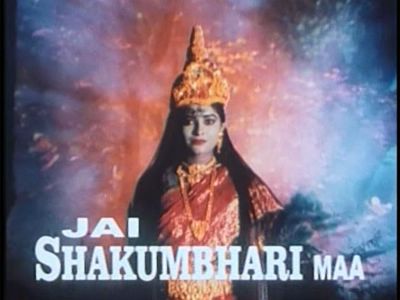
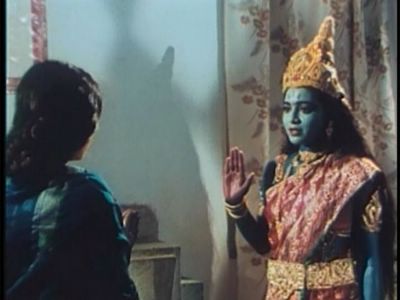
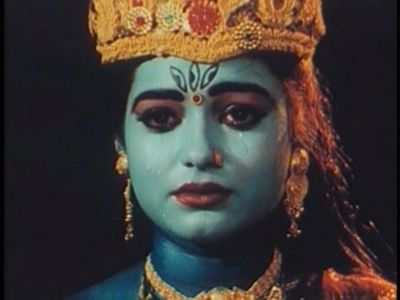
I don't know why the godess herself is crying??
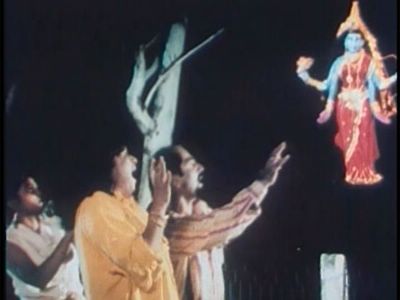
And the oscar for special effect's goes to......
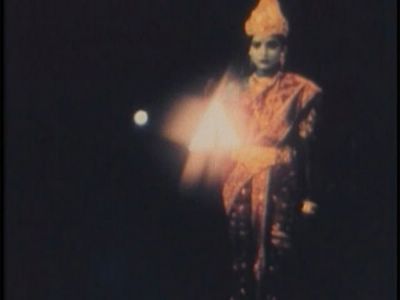
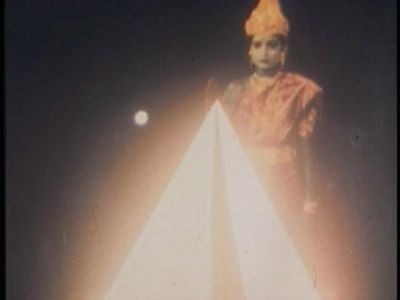
I like basu CHATTERJI movies and took Aastha because it was his movie. But i later realized that i had misread the DVD cover. It was a basu BHATTACHARYA movie and not a Basu CHATTERJI.That's how i ended up watching this movie.

Basu bhatttachrya supposedly took what is called a Amar-Manasi trilogy. With Amar and manasi his hero & heroine, he explored various issues in a man-women relationship. This was in the 70's.He came back in 1997 to make aastha with his favorite characters amar and mansi, played by ompuri and rekha.
Mansi is a middle class wife who is always in need of money. Amar a simple college professor, shuns away from money and lives a happy life with his meager salary. Mansi accidentally meets a woman who turns out to be a pimp and ends in her prostitution racket. Amar does not know anything. mansi leads a life of fear and guilt and also she is not able to enjoy her earnings.With the help of one of amar's student she confesses everything to amar by innuendo.

All together a pathetic movie. Basu battacharya wanted to make a bold movie on the lines of Indecent proposal,and almost ended up making a soft porn. The story, screenplay & dialog's all lack depths. Pathetic rekha through out the movie looks as if she just had 4 pegs of whiskhy and the acting was average. Om puri is wasted in the movie. Basu battacharya does not properly explain the reasons for mansi's decision or the morality part of the story.The screenplay could have been a lot better, he does not pose any question to the audience or make them think.He just keeps on telling the story as if it is some Aesop's Fable .
Music by saarang dev was a comedy. There is a scene where amar's student sees mansi with the pimp and rushes to tell that news to amar.what kind of a bgm should someone expect, something that conveys the danger ahead, suspense or sad .But this guy goes haywire with the sitar. The BGM was the regular music similar to the one that comes when the heroine is happy & she runs to tell a good news to someone. And when you feel that there is a need for a BGM, it will be complete silence.
The only thing that made me happy in that DVD was the trailer of "jai shakumbhari maa".It was a big comedy, i had a good laugh. If there is a genre to classify the movie.i would name that genre as "Spiritual Comedy".



I don't know why the godess herself is crying??

And the oscar for special effect's goes to......


Thursday, June 02, 2005
Kairee
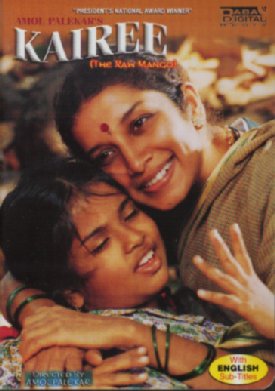
Kairee is the experience of a ten year old girl(Yogita Deshmukh) with her aunt taani(Shilpa Navalkar).The movie is based on the marathi short story by G.A. Kulkarni.The is a very positive and sweet movie.But if you have been watching lots of masala movies.It is hard to enjoy the movie. This is a movie that does not manipulate the emotions of the audience with tears and moving music. It just presents things as it is.The backdrop is a small village in rural india, where women have to struggle for everything.
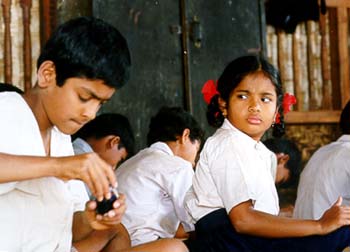
yogita comes to stay with her aunt after her mother's death. She likes her Taani mausi(shilpa Navalkar,she has one of the sweetest smiles i have ever seen).Both of them face problems because of men around them. Taani because of her husband who is having an affair with the maid servant and yogitha cause of the boys in her school. Yogitha is the only girl in her school who is pestered by the boys and her teacher is not that appreciative of her talents. But in midst of all the problems around them. They find there own dreamy world , a world of peacocks and raw mango.
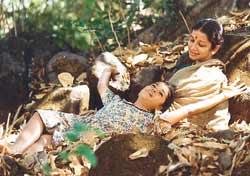
The docile taani, who bears all her husbands behaviors silently, rebels when it comes to yogitha. she fights with her teacher for her and joins her in an another school where the master(Atul kulkarni) is very encouraging to yogitha. When things get out of hand with her and her husband, she makes yogitha leave her house with advices that she should study well and not end up like her.

The movie was produced by Union Health Ministry and directed by Amol Palekar.It won the Best film on social issues award on the 47th National Film Awards. The movie has so many new faces and one of them is Atul kulkarni. Even though kairee was his first movie. Hey ram got released before it. He does the part of a stuttering school master who encourages yogitha and advices her to realize her dreams.

I stumbled upon Atul Kulkarni web site.It has lot of info about this awesome actor.
 .
.Atul has acted in many south indian movies and is busy in some new ventures.
Atul's hindi filmography
Atul interview in hindu
Wednesday, June 01, 2005
Ashok R Nath’s Saphalam
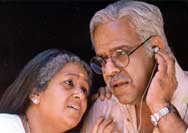
It is a movie about an old couple,Barister Sankaran Nambiar (Balachandra Menon) and his wife Subhadra (Sumitra).They have been married for 40 years and are leading a happy life in their own ways.Barrister sankaran nambiar is an interesting character.He is a dreamy,philosophical & sensitive personality.He is an oxford educated lawyer who was a writer,some one who is interested in western music, and can play a piano.He cannot hear properly and uses a hearing aid.But he has no problem listening to his wife's speech as he can understand what she talks just by watching her lip movements.A very sensitive and philosophical person, who views things from a writer's point of view.He hears the sound of the birds in his courtyard as Beethoven's symphonies.He is either enjoying things around him or looking at it philosophically. He also has the traits of typical old people,he complains about the younger generation, feels that he is neglected by his son ,does not show his feelings openly and broods,his wife has to ask him for everything etc.Also as the typical head of the house, he expects his wife to do most of the work.
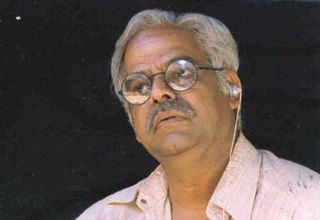
OK, to the story.The elderly couple who are leading a peaceful life are concerned about their childless son who is living in USA.One day they hear the news that their daughter in law is pregnant.They are expecting that their daughter in law would come there and have the delivery at their home.But their son decides to have the baby in US as facilities are better out there.Later his sons asks his mother to come to USA to help her wife during pregnancy.
shankaran nambiar is upset that his son is neglecting him.He broods that son's always love their mother and neglect their fathers.He is more upset on the fact that his wife is about to leave him.He has never separated from his wife and he does not want her to leave.But because like his son,he also had a late child, he understands the pain and expectaions of a father and does not want to hamper his son and his wifes joy.His wife leaves to USA.He becomes very emotional and both shankaran nambiar and subhadra die almost at the same time.
It was all good till then.After that follows the last 5 pathetic minutes. where the camera follows sumithra running in slow motion to meet Balachandra menon playing piano.
Except for the last 5 minutes a nice movie.There is a lyrical quality to lot of scenes in the start.A great performance by balachandhra menon.He plays the role of barrister nambiar beautifully.He shows all the characteristics that i mentioned in the 2nd paragraph nicely.

The movie is well directed by ashok Nath, it won the 2003 national award for BEST MALAYALAM FILM.
Links
Ashok R Nath at cinemaofmalayalam
